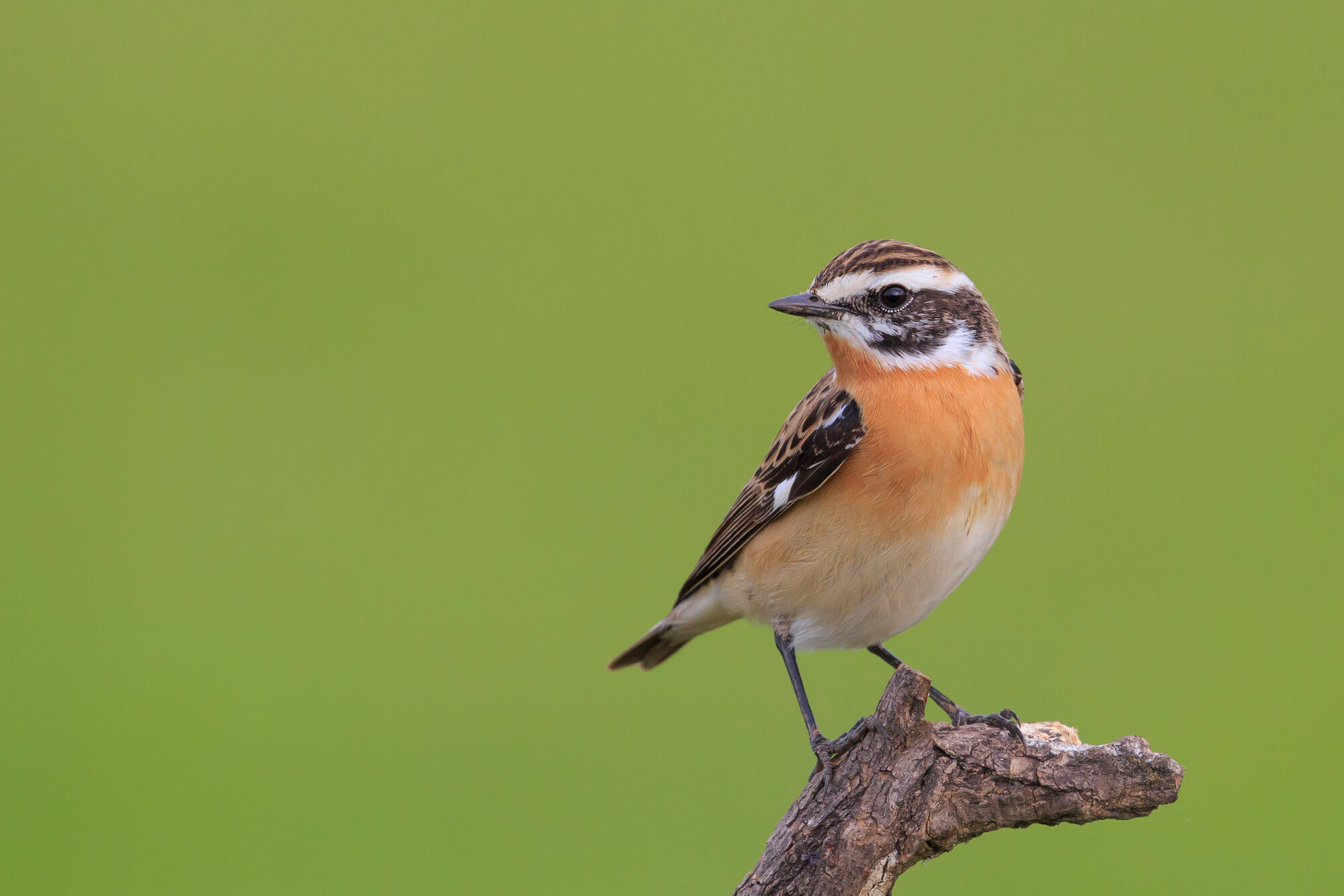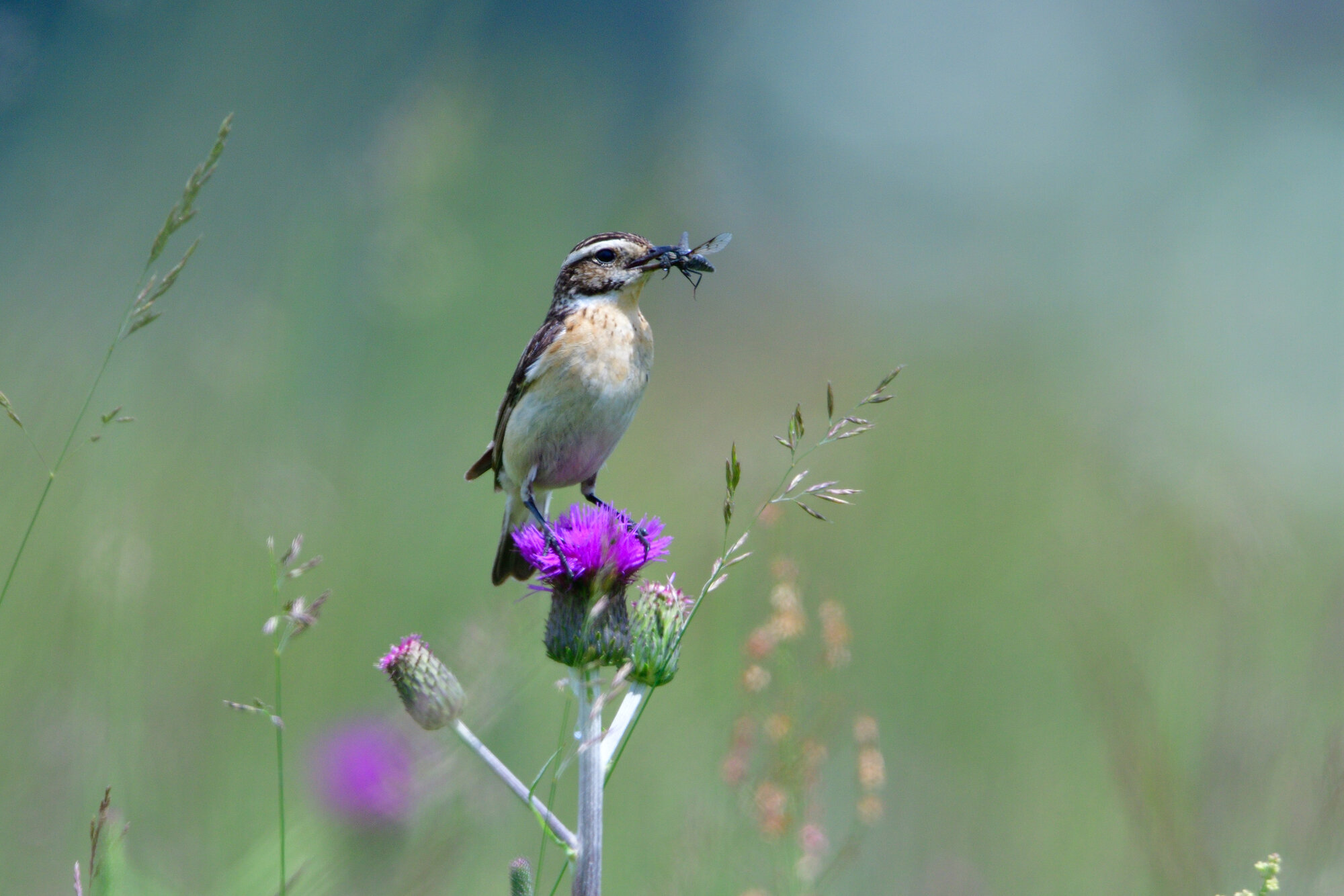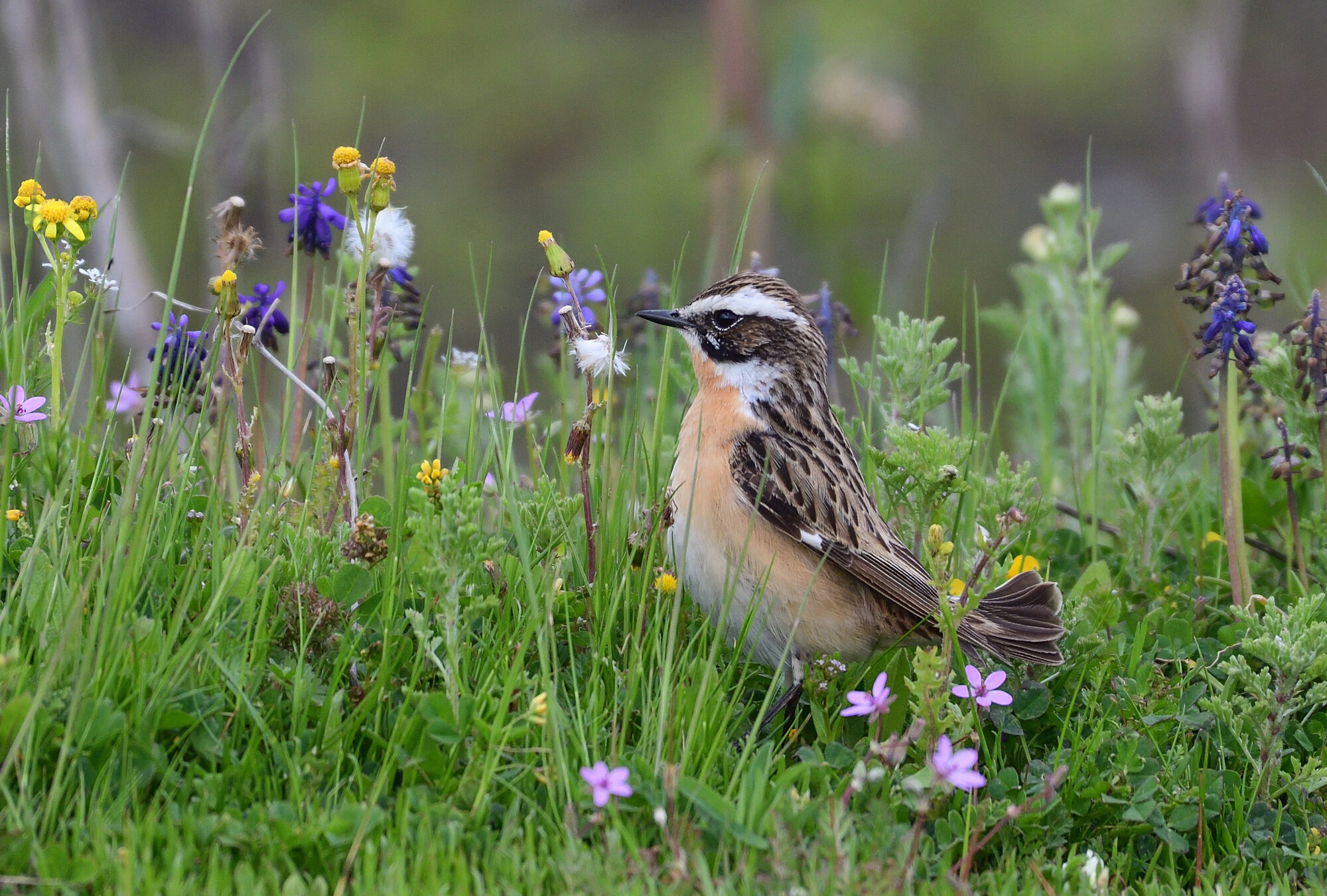Bird of the year 2023: The Whinchat
Following the sun

The Whinchat (Saxicola rubetra) was chosen as Bird of the Year 2023. The 12-14 cm small songbird belongs to the flycatcher family and is widespread in almost all of Europe.
Whinchat belongs to the long-distance migrants and spends the winter in its wintering grounds in tropical Africa. They make their way there in mid/late August, covering a distance of about 5,000 kilometers. They return to their European breeding grounds in April. They fly only at night, during the day they search for food or rest.
The Whinchat is one of the most endangered bird species and is listed in all Red Lists of Central Europe (except Poland and Hungary). It is at home in unmown, flower-rich meadows and fallows, where it also builds its ground nests for breeding. And since these meadows, fallows and field margins are disappearing more and more, the population of the Whinchat is also declining. The population in Germany is estimated at 20,000-35,000 breeding pairs.
Due to the very short breeding season between April and August and only one possible annual brood, successful breeding is all the more important. And this unfortunately becomes all the more difficult the fewer habitats the Whinchat has left.

A good view is the key
The presence of individual bushes, high shrubs or fence posts, which are used by whinchats as elevated singing and perching places, is particularly important for the selection of a suitable breeding territory for the small songbirds. They stay there and from here they start their hunting flights for insects or attract females. Their diet includes insects and their larvae, worms and spiders, as well as berries in autumn.
Special external characteristics of the brown throats are a light to white stripe above the eyes and the light orange-brown coloring of the throat and breast. The back is brown with darker spots and when flying off, the white base of the tail can be seen. Overall, however, females are much lighter in color than males. With their dorsal coloration, Whinchat can make themselves invisible when danger threatens by assuming a "pole position", for example, to protect themselves from birds of prey.
Smacking choirboy
The meadow chat (Saxicola) owes its generic name to its clicking, smacking sounds, which occur at the beginning of its stanzas. The stanzas are variable, becoming faster as they progress and then ending abruptly. Its call sounds like a soft "djü", which is somewhat reminiscent of the call of the bullfinch, followed by a short, characteristic snap. Or a harsh "tek tek" may occur.
Double winner
In 2023, the whinchat will be awarded the title of Bird of the Year for the second time - it had already been chosen once before in 1987. In this year's public election, 135,000 votes were cast. With 43.5% of the votes, the whinchat won the vote. It prevailed over the tree sparrow, the red-backed shrike, the pied flycatcher and the moorhen. The Bird of the Year has been carried out by NABU (Naturschutzbund Deutschland) and its Bavarian partner LBV (Landesverbund für Vogelschutz) since 1971. This was the third election conducted by public vote.


